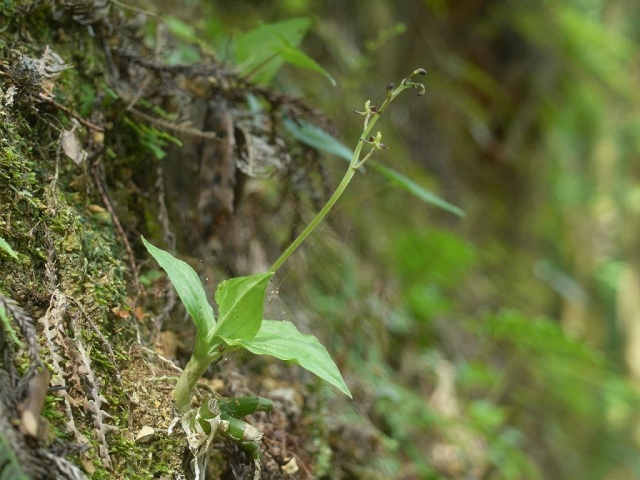From Collection to the Digitization of Caribbean Plant Specimens
Submitted by Kristian Saied-Santiago on
Imagine you are walking around your ideal natural paradise in the Caribbean. To me, that would be hiking in some trail at ‘El Yunque,' deep into the forest, gazing one of the majestic waterfalls it showcases. While busy contemplating your surroundings, a flower you have never encounter before mesmerizes you. You quickly get closer and utilize your senses to learn more about this beauty. After this initial observation, a few questions usually follow in our minds including: What is the name of this plant/species? Is it native to this region or is it originally from a different place? And, could this be an endangered species? In this day and age, with good Internet connection and some patience you will likely be able to obtain answers to these queries. However, have you wondered why documenting the existing diversity of plants can be beneficial or even necessary for a particular area? In this blogpost, I will give a small historical background on how this process came about in Puerto Rico (PR), the importance of moving from a simple collection to the digitization of these species and the involvement of the New York Botanical Garden (NYBG) on these projects. Making these databases available to scientists helps regions with critical issues such as invasive and endangered species.
Nathaniel Britton, at the time the Director-in-Chief of the NYBG, was a driven individual who had the interest and power to carry the daring task of collecting information on the flora of the Caribbean. During the late 19th century, the NYBG was expanding, and expeditions to different regions of United States (US) were taking place1. Following the Spanish-American War, US acquired a group of islands in the Caribbean, including PR. Britton saw these chain of events as the perfect time to begin team expeditions to PR. After discussions with Arthur Yager, PR’s governor at the time, and the New York Academy of Sciences he was allowed to move forward with his operation. In 1913, he proceeded to assemble a group of renowned scientists from diverse backgrounds that engaged in sixteen documented expeditions to PR1. "The Scientific Survey of Puerto Rico and the Virgin Islands" is an eighteen-volume collection that stems from the expeditions carried by Britton and colleagues in which more than 10,000 plants species were documented in the span of almost thirty years2. It was the first project of this magnitude conducted in any Caribbean soil. Currently, the NYBG’s Herbarium is home to the extensive compilation of specimens that were collected in the lands of PR and the Virgin Islands.
The William & Lynda Steere Herbarium at the NYBG is one of the richest places in North America when it comes to plant collections. Apart from collections of PR and Virgin Islands’ mentioned above, the herbarium contains close to ~7.8 million plant specimens and continues to grow3. These samples have come from distinct regions of the Western Hemisphere, with major contributions from the Caribbean islands. While having these plants in their possession is valuable, making the collections accessible to scientists and the general public is a major step to advance efforts on the conservation of specimens from invasive species. Work from Burke and DiTommaso on the invasive species Corallita (Antigon leptopus), is an excellent example of the benefits of having data on plant species from herbariums available. The scientists used information on Corallita at different gardens, including the NYBG, to determine new distribution data and clarify the identity of similar species4. Corallita has been introduced in many islands in the Caribbean because of its aesthetics and vibrant growth at tropical climates. However, it has proved to be difficult to detain its propagation if left unmonitored; in fact, it’s estimated that twenty percent of St. Eustatius (a small island west of Antigua) is covered with Corallita4. In summary, their study alerts regions containing the plant of its destructive potential to local vegetation.
The need for disseminating information on plant species, led to the creation of databases at the NYBG. However, these initial endeavors were mostly operated by brute force and were not sufficient to digitize the myriad of samples present at the herbarium3. The involvement of Dr. Thiers and Dr. Boom, researchers at the NYBG, was, therefore, essential to these projects, as they were able to bring new research grants protocols and initiatives to tackle the problem. Dr. Thiers discusses some of the advances in her 2012 publication “Increasing the efficiency of digitization workflows for herbarium specimens." Some of the new tactics implemented include "field book digitization, partial data entry and imaging, and optical character recognition [mechanism for grouping records during data entry] of specimen images.”3 This workflow has considerably sped the scanning process, which is apparent by the number of files the ‘Virtual Herbarium’ holds. As of January 2016, they have added near 2.5 million online records!5
For decades, herbariums have served as the equivalent of museums for plant collections and a local source for learning about the properties of the flora displayed there. The NYBG has been a unique source for plants from different regions, particularly specimens from the Caribbean. The evolution of these collections into digitized records has become the logical step of sharing this knowledge with people interested in preserving our environment.
References:
1 Boom, B. Nathaniel Lord Britton and the Making of The Scientific Survey of Puerto Rico. (As presented in the American Historical Association on Jan. 2015.)
2 Sastre-D.J, and Santiago-Valentín, E. Botanical explorations of Puerto Rico by N. L. Britton and E. G. Britton: their significance in plant conservation, horticulture and education. (1996)
3 Tulig, M. et al., Increasing the efficiency of digitization workflows in herbarium specimens. (2013)
4 Burke, M., and DiTommasio, A. Corallita (Antigonon leptopus): Intentional Introduction of a Plant with Documented Invasive Capability. (2011)
5 Thiers, B. et al., Digitization of the New York Botanical Garden Herbarium. Brittonia (2016) 68: 324.










